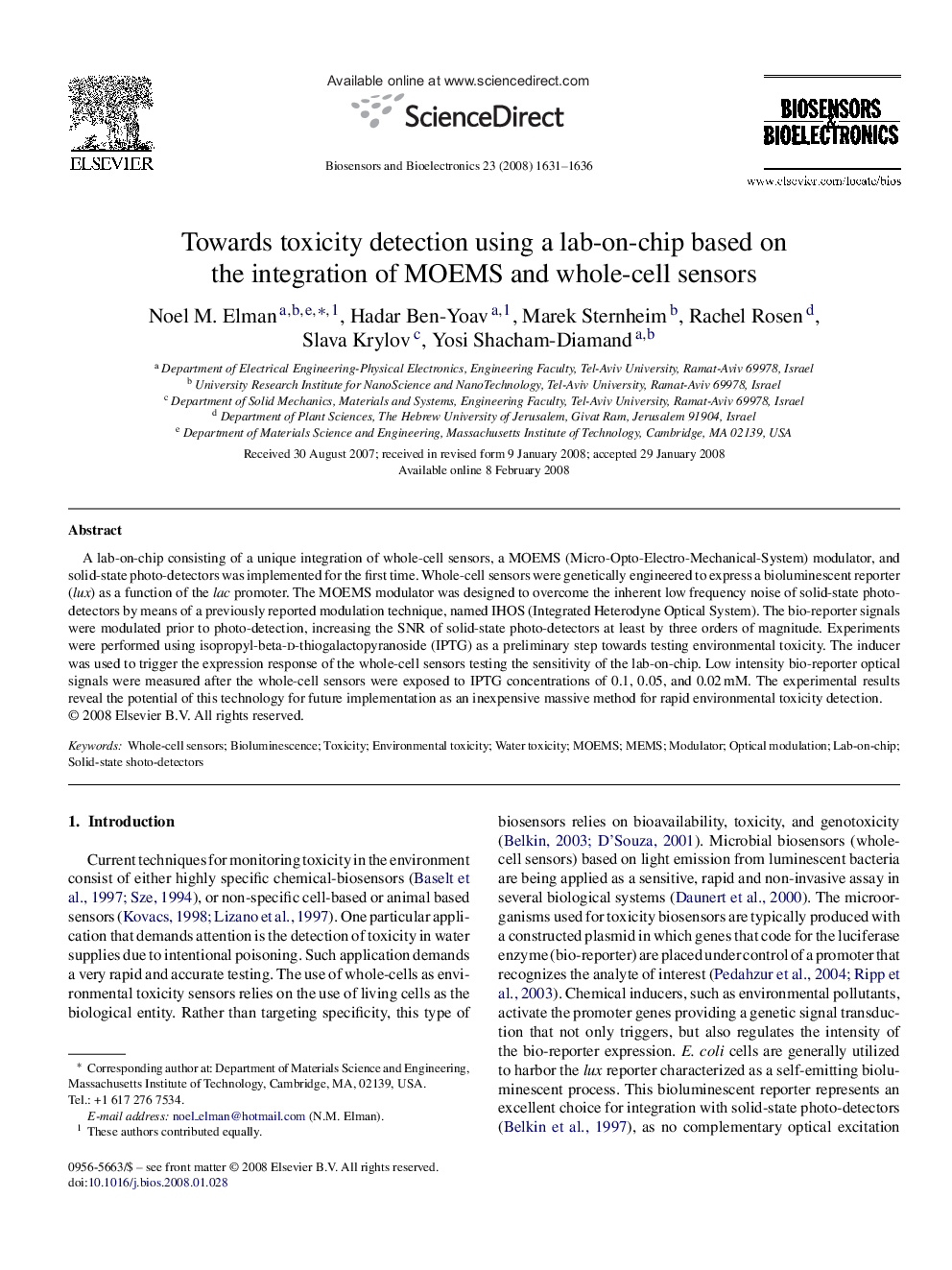| Article ID | Journal | Published Year | Pages | File Type |
|---|---|---|---|---|
| 869371 | Biosensors and Bioelectronics | 2008 | 6 Pages |
A lab-on-chip consisting of a unique integration of whole-cell sensors, a MOEMS (Micro-Opto-Electro-Mechanical-System) modulator, and solid-state photo-detectors was implemented for the first time. Whole-cell sensors were genetically engineered to express a bioluminescent reporter (lux) as a function of the lac promoter. The MOEMS modulator was designed to overcome the inherent low frequency noise of solid-state photo-detectors by means of a previously reported modulation technique, named IHOS (Integrated Heterodyne Optical System). The bio-reporter signals were modulated prior to photo-detection, increasing the SNR of solid-state photo-detectors at least by three orders of magnitude. Experiments were performed using isopropyl-beta-d-thiogalactopyranoside (IPTG) as a preliminary step towards testing environmental toxicity. The inducer was used to trigger the expression response of the whole-cell sensors testing the sensitivity of the lab-on-chip. Low intensity bio-reporter optical signals were measured after the whole-cell sensors were exposed to IPTG concentrations of 0.1, 0.05, and 0.02 mM. The experimental results reveal the potential of this technology for future implementation as an inexpensive massive method for rapid environmental toxicity detection.
